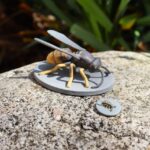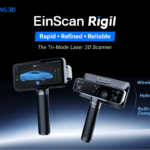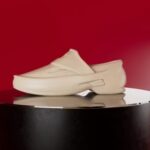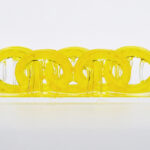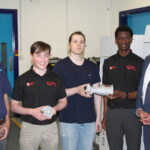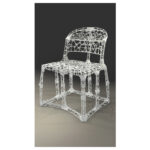A group of researchers from Tokyo University of Science and Suwa University of Science, in Japan, have collaborated with TOCALO Co. Ltd. to optimize laser Directed Energy Deposition (DED) with the use of a digital twin.
DED + Digital Twin
The DED process melts the metal particles and fuses them to build up a 3D object, much like typical metal printing, except with a DED process, it does not require a print bed. The melt pool can be manipulated over curved geometries outside of a build chamber, meaning it can be used to repair metal components in situ by depositing metal powders on the surface to be repaired.
DED offers advantages over other 3D printing techniques as it can produce more compact equipment and reduce metal powder waste. However, until now it has largely been difficult to optimize, requiring a large amount of trial and error to get the best results.
To reduce the amount of guesswork needed for the process, the researchers developed a digital twin of the core machining technology based on the fusion of metal in the area to be repaired.

This digital twin was effectively a 3D machining numerical analysis system that made use of a mathematical model of the DED process, and automatically generated a metal powder deposition region with a death-birth algorithm. The system was able to apply the thermal radiation, thermal conduction and viscoplastic/thermoplastic constitutive models to the deposited region, allowing for accurate simulation of the entire state change process from melting to solidification.
A death-birth algorithm is a type of optimization algorithm that iteratively adds or removes elements from the solution set to find the optimal solution. In the context of DED, the death-birth algorithm is used to generate the metal powder deposition region that results in the best repair outcome. The algorithm eliminates the need for trial and error, and instead finds the optimal conditions for the repair process automatically.
Optimized
By incorporating these models into a finite element analysis program, the team was able to predict the forming process conditions, temperature distribution, deformation state, and residual stress distribution in advance, which was then verified through experiments.
Overall, the researchers demonstrated that DED is superior to other repair methods in terms of interfacial strength, with lower residual stresses in the deposited layer, and other improved mechanical properties.

“Using our technique, the surface shape of a metal structure can be completely restored on-site, and the disposal of the metal powder required for repair can be significantly reduced,” said Professor Masayuki Arai, Tokyo University of Science.
“However, the optimum forming conditions required for the widespread application of this technology in industry had to be hitherto determined by a trial-and-error process.”
This digital twin has the potential for various industrial applications, such as repairing cavitation thinning on power plant blades, and reducing residual deformation after repairing thinning on gas turbine rotor blades. With its automation and prediction capabilities, the numerical machining analysis system makes DED repair technology more efficient and sustainable.


